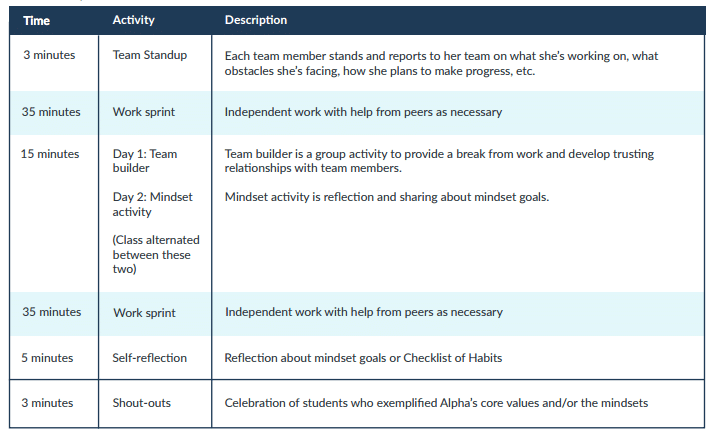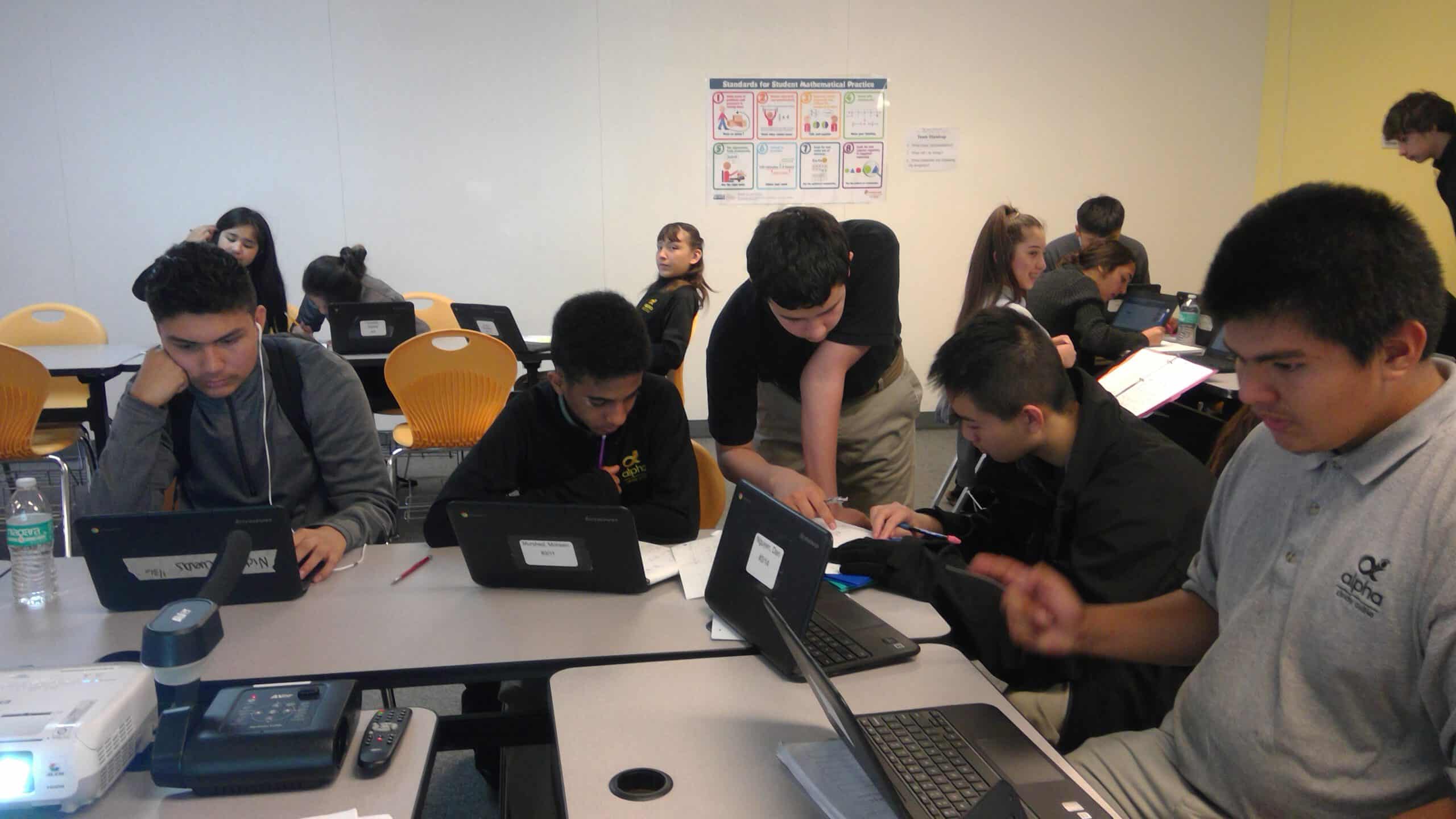The new report How to create higher performing, happier classrooms in seven moves: A playbook for teachers” tells stories of teachers who improved student engagement and academic results by introducing seven specific, practical moves into their classrooms that replicate the successes of top managers in cutting-edge workplaces. For the next three months, I’ll be doing deep dives into each of these important moves.
The second move for creating a dynamic classroom is to release control to students so that they can make progress without waiting for the class or teacher and practice the mindset of agency. To do this, a teacher must free students from teacher-delivered instruction and give them content and lessons that they can learn independently.
The traditional classroom model does not lend itself well to students learning independently. Its instructional format is predominantly face-to-face, teacher-delivered lectures or demonstrations of the material, and each cohort of students works through a single, unified curriculum at the pace of the whole group. Other learning models are arising, however, that open broad possibilities for teachers to empower students to drive their own learning while teachers shift to helping students in other ways. The main technical innovation behind these new models is online learning, which simplifies the task of putting content and lessons directly in the hands of students for them to control themselves.
The primary way that Kelly Kosuga, a 9th-grade Algebra I teacher at Cindy Avitia High School, part of the Alpha Public Schools network in the San Francisco Bay Area, made this move was by transitioning from a Station Rotation to a Flex model of blended learning.
At the start of the 2015–16 school year, Kelly implemented a Station Rotation that consisted of three stations: Solo Station (independent work), Peer-to-Peer (pair work), and Guided Group (teacher-led instruction). Each student spent 25 minutes in each station before rotating—a classic Station Rotation model. But Kelly worried that this model constrained students’ ability to control their own learning and her ability to keep students on track. She wondered if she could do away with the direct-instruction station entirely so that she could circulate the room and help students on an as-needed basis. She also wanted a more flexible system so that peers could get help from each other when they needed it.
The next semester, Kelly developed a new classroom routine, which—although it changed frequently as she fine tuned—more or less took the shape of the schedule below. Kelly projected this schedule onto a screen each day, along with a digital timer that counted down the minutes for each activity. As Kelly relaxed from stations to “work sprints”—short spurts of time during which students work independently through the online curriculum and get help from their peers on a “need help/give help” basis—her model morphed from a Station Rotation to a Flex. The fixed increments of time dedicated to each learning modality gave way to a more flexible approach that varied according to students’ needs during each work sprint.

Within this new design, students spent most of their time doing work sprints. Kelly released control to her students gradually by slowly increasing the length of the work sprints. At the start, Kelly used three 25-minute work sprints and set specific times for quizzes. As students got used to the system and built endurance, she lengthened the work sprints to 35 minutes each. She also let students choose when to take quizzes during the work sprints.
For many educators, giving their students control of their learning can sound like devolving into total anarchy. But although students had more control, they still had guardrails. The first guardrail was a pacing guideline. Kelly gave the students a calendar and showed them how to plan out the number of IXL Math assignments they needed to complete each week to stay on track. If they needed more time, then they could complete them in Learning Lab after school.
The second guardrail was formative assessments. Alpha set school-wide targets for where students needed to be in learning Common Core standards and scheduled interim assessments to check for that progress. In turn, Kelly mapped out suggested mileposts for students to hit to be ready for the interim assessments.
By the end of the semester, Kelly’s classroom had an entirely different culture from at the start. Her students had transitioned to a much more flexible, student-driven learning environment. Rather than spending her time in Guided Group, Kelly used each Algebra I class period to meet individually or in small groups with specific students using responsive feedback structures. She had shifted from being an instructor who imparted lessons to a coach who gave feedback and developed relationships of trust.
For Kelly, this new model transformed how she could use her time during class periods. But the shift was not merely about altering Kelly’s own experience and ability to manage the classroom. For students, the learning experience had also materially changed: Kelly had released control to students by easing into a Flex model that nurtured agency.
To learn how teachers at Redwood Heights Elementary School and Khan Lab School also released control to students, check out the rest of the playbook here: “How to create higher performing, happier classrooms in seven moves: A playbook for teachers”
For more, see:



